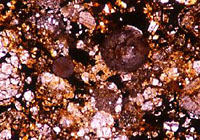|
Specialized Exbtn Experienced Study Room Temporary Exbtn Outdoor Exbtn |
||
|
|
| There is a long geohistory in Iwate. The various kinds of igneous rocks, metamorphic rocks, and fossiliferous rocks of Paleozoic, Mesozoic, and Cenozoic strata in this region tell us an interesting story of the geologic age. | ||||||||||||||||
|
|
||||||||||||||||
|
||||||||||||||||
|
|
||||||||||||||||
|
||||||||||||||||
|
|
||||||||||||||||
|
||||||||||||||||
|
|
||||||||||||||||
|
||||||||||||||||
|
|
||||||||||||||||
|
||||||||||||||||







